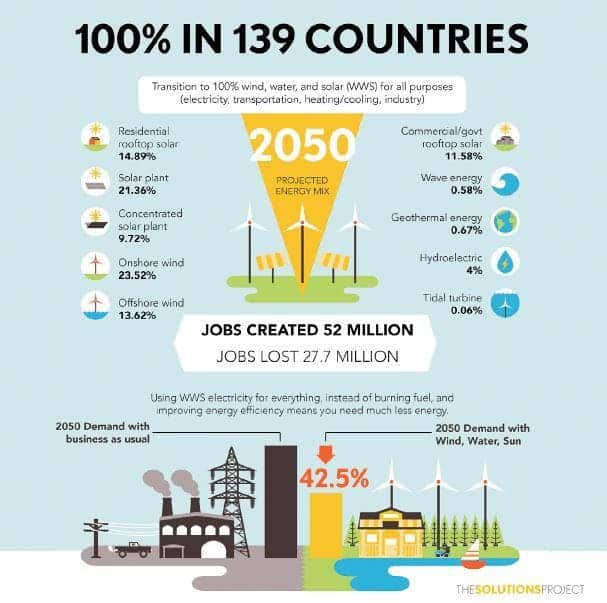If they follow the recommendations of analysts at Stanford University, some thirty years from now, 139 countries could transit to a carbon-free society where all energy needs are met by wind, solar, and water. The roadmap offers policymakers the decision-making tools and science that they need to see their countries dump fossil fuels for good.
“Both individuals and governments can lead this change. Policymakers don’t usually want to commit to doing something unless there is some reasonable science that can show it is possible, and that is what we are trying to do,” says Mark Z. Jacobson, director of Stanford University’s Atmosphere and Energy Program and co-founder of the Solutions Project, a U.S. non-profit educating the public and policymakers about a transition to 100% clean, renewable energy. “There are other scenarios. We are not saying that there is only one way we can do this, but having a scenario gives people direction.”
When there’s a will there’s a way
Jacobson and his 27 colleagues assessed the available renewable energy resources for each of the 139 countries and then the number of generators for each type of resource — wind, solar, and water — in order to achieve 80% renewable status by 2030 and 100% by 2050.
This complex analysis differs from other 100-renewable roadmaps since it takes into account other factors besides energy generation and carbon reduction. Specifically, the Stanford group also included air pollution benefits, job benefits, and cost benefits. The paper published in the journal Joule, also covers how this approach would reduce energy demand and costs compared to a business-as-usual scenario.
Some of the main consequences of 139 countries — which collectively are responsible for roughly 99% of all greenhouse gas emissions — going 100% renewable by 2050 include:
- a net increase of over 24 million long-term jobs;
- an annual decrease in 4-7 million air pollution deaths per year;
- stabilization of energy prices;
- reduced risk of violent conflicts focused on acquiring energy;
- international power demand drops by 13% because the energy associated with mining, transporting and refining fossil fuels is eliminated;
- power demand should go down by another 23% since electricity is far more efficient than burning oil or coal, so around 36% reduced total power demand as a result of phasing out fossil fuels;
- and annual savings of over $20 trillion in health and climate costs.
Of all the 139 countries, Jacobson et al found it’s those countries that have a great share of land per population — e.g. United States, China, European Union — that will find it easier to make this transition. On the other hand, highly populated, but small countries will have a harder time making the transition. One example is Singapore which is surrounded by ocean and will foreseeably require offshore renewable investments.
“Aside from eliminating emissions and avoiding 1.5 degrees Celsius global warming and beginning the process of letting carbon dioxide drain from the Earth’s atmosphere, transitioning eliminates 4-7 million air pollution deaths each year and creates over 24 million long-term, full-time jobs by these plans,” Jacobson said in a statement.










